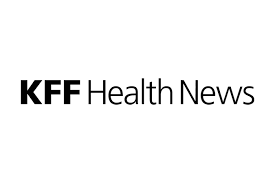Understanding bipartisan push for site-neutral Medicare payments aiming to curb healthcare costs, consolidation
Editor's Note
Amid growing concerns over healthcare spending and affordability, there is bipartisan interest in aligning Medicare payments for outpatient services across various care settings through "site-neutral" payments, KFF June 14 reports. As a June 2023 Modern Healthcare article explains, last year Congress reviewed legislation to expand site-neutral payment policies, which would eliminate the payment premium for certain services provided at hospital outpatient departments (HOPDs) and set the stage for a clash between hospital lobbying groups and policymakers. The aim is for Medicare to pay the same rate for services provided in HOPDs, ambulatory surgical centers (ASCs), and freestanding physician offices, while maintaining patient safety and quality standards. Private insurers could also see savings by adopting similar policies.
Site-neutral payment reforms would lower Medicare costs by reducing payments for services conducted in more expensive settings and diminish hospitals' incentives to acquire physician practices, which often leads to higher commercial prices. Medicare has already made incremental changes, such as aligning payments for clinic visits at off-campus HOPDs that started billing after November 2, 2015. However, policymakers are pushing to extend these reforms to more settings, including on-campus HOPDs and previously exempt off-campus HOPDs. In December 2023, the House passed the Lower Costs, More Transparency Act to align Medicare payments for drug administration services in off-campus HOPDs with those in freestanding physician offices.
The Lower Costs, More Transparency Act “seemed like one significant step toward fixing a piece of our nation’s broken healthcare model may have finally gotten some momentum, [but] now, it looks like that’s stalled,” a Forbes March 12 article reports. The Senate stripped the Act earlier this year, in part due to the American Hospital Association’s strong opposition and argument that “higher overhead costs for hospitals necessitate higher fees, warning that site-neutral payments might decrease access to care by further shaving hospitals’ operating margins.”
Opponents, mainly from the hospital industry, argue that these reforms could harm patient access by reducing hospital revenues, particularly affecting rural and low-income populations. They claim higher payments for hospital outpatient services are justified by the higher costs associated with maintaining emergency services and regulatory requirements. Proponents counter that payments should be based on the least-expensive safe setting for the service. They argue that site-neutral reforms would reduce Medicare and beneficiary spending, lessen incentives for hospital consolidation, and potentially lower commercial prices.
The potential savings from site-neutral payment reforms vary widely. For instance, aligning payments for drug administration services alone could save $4 billion over 10 years, while broader reforms could save over $100 billion. These reforms could also be designed to limit the impact on vulnerable providers, such as rural or safety-net hospitals, by using savings to fund targeted assistance or capping revenue losses.
Read More >>

 Free Daily News
Free Daily News